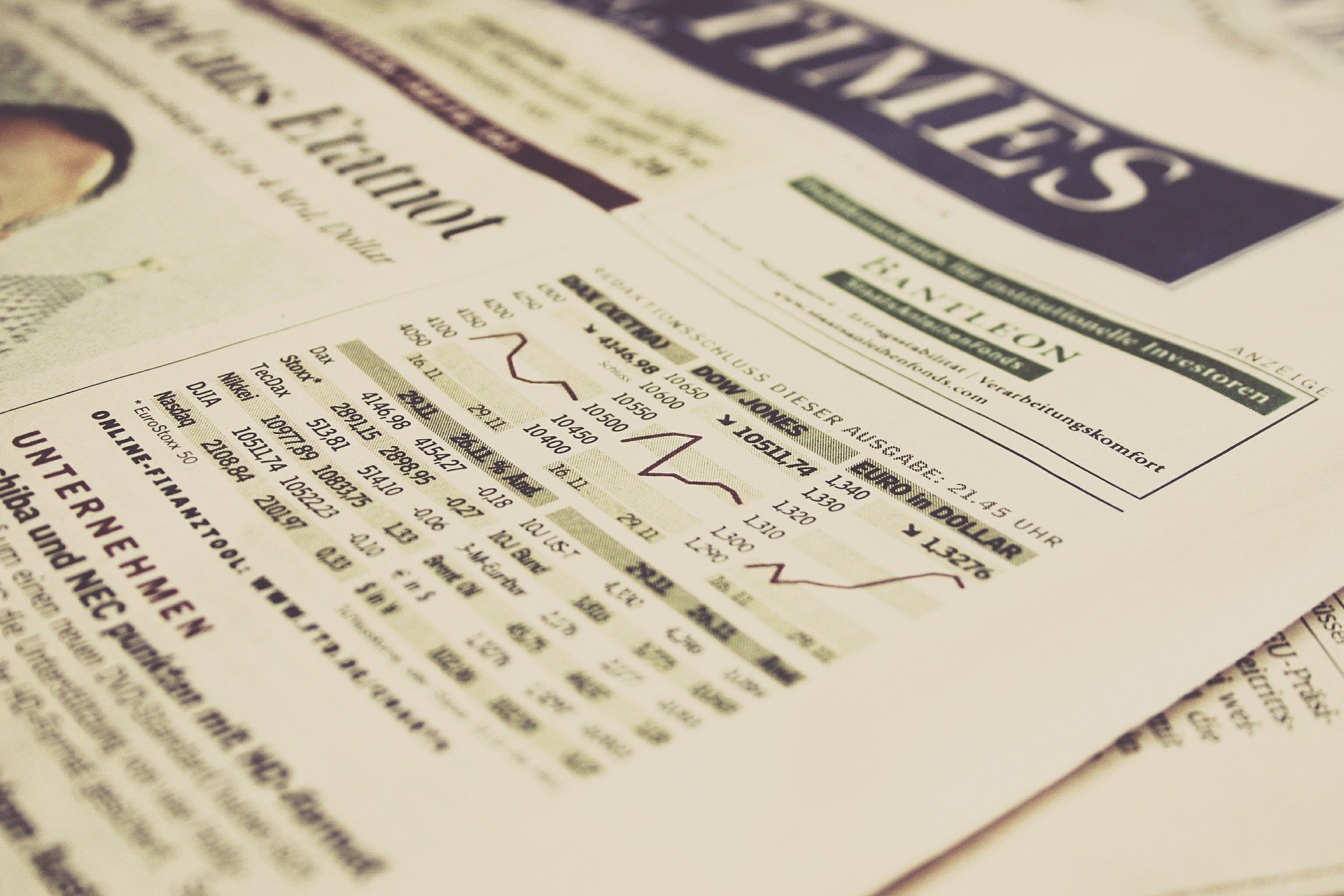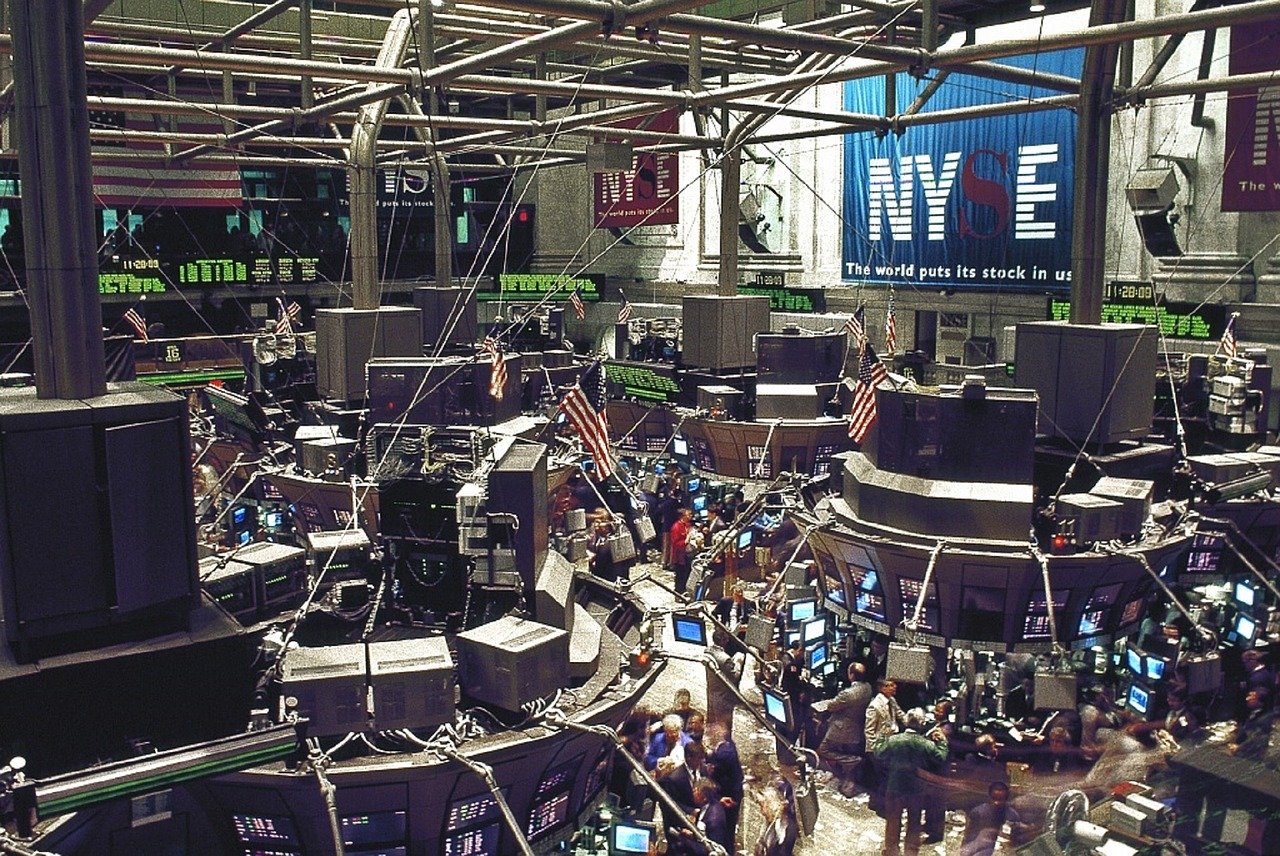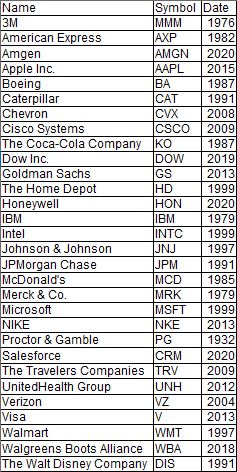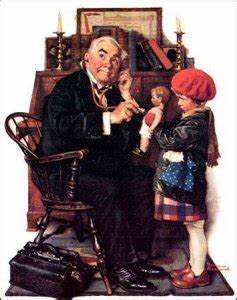
Dow Jones Industrial Average
Watch the news; at some point, they'll get around to reporting on the trading at the New York Stock Exchange by stating "The Dow" went up or down by a certain amount.

But what is “The Dow?” And just as importantly, what does it mean?
So let's step out uptown amongst the big-money folk,

and learn about the Dow Jones Industrial Average.
This ain't no farmer's market
Let's begin by going to the stock exchange.
The stock exchange is where stocks, or pieces of a company's ownership, are bought and sold.

In many ways, it works like any market, including farmer's markets.

But a lot more!
Like any market, the price for the things being sold (stocks in this case) change over time. Usually the changes in prices at the local farmers market don't mean too much, but not so with the stock market.
People have a lot of money tied up in stocks. Increasing stock values means people are making money, and they lose when it goes down.
The value or price of stocks often reflects how well businesses are doing. When business is going well, stocks tend to be worth more.
Given all this, it is valuable to keep tabs on how the market is doing.
People want to see how their invested money is doing.
Tracking how stock prices behave can give some idea as to how businesses as a whole are doing.
What is needed then is a simple way to measure how things are going.
The founding of a number
Charles Dow was born on November 6, 1851, to a farming family in Connecticut. As he grew up, he went into newspaper reporting, eventually publishing a newspaper of his own. In time, he would take to reporting business news and would start a newspaper that would become The Wall Street Journal.

Now go to the 1890s.
American businesses were recovering from some rough times, and people were concerned about how their stock investments were doing. (Sound familiar, look up above.) To give his readers an idea of how the exchange was doing, he came up with the Dow Jones Transportation Average to track how transportation companies (railroads and shipping) were doing. (The name coming both Charles Dow and Edward Jones, his partner.) Later, he expanded to keeping track of how industries, in general, were doing by creating the Dow Jones Industrial Average. This average has became known simply as "The Dow Jones" or just "The Dow."
How does it work?
The Dow is simply an average of a select group of companies. In the beginning, it was an average of 12 companies, later expanded to 30. The companies used changed over time – the current list, along with the year added, is as follows:

The index is simply an average.

All the companies' share values get added up at the close of each day, then divided by the number of companies.
Over time, there had to be changes made to allow for the active life of stocks. Here are some examples:
Breaking up an act
From time to time, the value of a stock becomes valuable enough to "split;" instantly, every shareholder has twice the shares. If you have 100 shares, you immediately have 200. If you have 300, you now have 600. To keep the value of the Dow the same, each share is valued half what it was before; a share worth $100 is now worth $50.
Mr. Jones realized that a stock splitting could change the value of the Dow Jones even though there is no real change in the stock market's values.
Changes then were made to how the average is determined to fix the problem.
The new kid on the block
It sometimes comes to pass that changes made to the list of companies that get used, changes that can change the Dow Jones average the same as above.
For example, suppose ACME industries at $20 a share gets replaced with Snodgrass Agricultural at $40 a share. This simple swap would give the average a boost without anything happening at all.
Another correction has to be made.
And these corrections have been going on for a century or so.
Options, options
The Dow is not the only game in town to learn how the market is doing, and many would let you know that it has its definite weaknesses.
The Dow Jones uses only 30 companies to make its measurements, but thousands of companies trade their stocks every day.
Originally, the Dow took a straight average of all prices, not allowing that different companies have widely different numbers of shares.
The way the Dow has corrected has been questioned for not being very accurate -- and getting more so all the time.
Here are some alternatives:
Standard and Poor (S&P 500)
The Standard and Poor takes hundreds of stocks and takes an average that weighs the companies with more shares more heavily. In this way, the average reflects the influence the larger companies have in influencing the market's overall behavior.
Wilshire 5000
Like the Standard & Poor, this index takes in thousands of companies (not necessarily 5000).
But no matter how you measure the market, the end goal is the same thing; putting a mathematical stethoscope to the world of money to see how healthy it is.

The Doctor and the Doll by Norman Rockwell
This is something we all should be informed about.
On the web
How To Read The NASDAQ and Dow Jones
A short video explaining how the Dow Jones works and its history.
What Do "Points" On The Dow And S&P 500 Actually Mean?
Video explaining what a point change in the Dow means.
This site gives the latest results for the Dow Jones average as well as several others. If you choose, look up the value of gold, oil or the exchange rate with the Euro.
A page from the same site as above, but it gives the numbers for the Wilshire 5000.
Don't miss out on future posts! Sign up for our email list and like us on Facebook!
Check out more hot topics, go back to Home Page
Comments? You can contact me at mailbox@thehomegrownprofessor.com